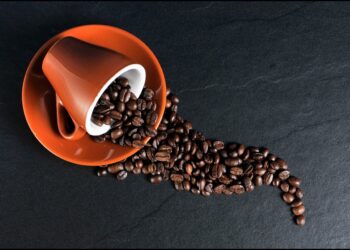Mastering Coffee at Home: Essential Brewing Techniques and Tips
Coffee is not just a beverage; it is a global phenomenon that brews enthusiasm across continents. Despite its pervasive presence in our morning routines, many coffee aficionados are now endeavoring to refine their home brewing skills. Mastering coffee at home involves understanding a range of techniques and adjusting variables to suit individual tastes. This comprehensive guide will delve into essential brewing methods, provide actionable tips, and answer some common questions to help you optimize your home coffee experience.
Choose the Right Coffee Beans
Understanding Coffee Bean Types
Selecting the right coffee beans is pivotal to achieving an excellent cup of java. Coffee beans are primarily categorized into two types: Arabica and Robusta. Arabica beans are renowned for their smooth, complex flavor profiles, while Robusta beans are more robust and pack a stronger caffeine punch. Experiment with beans from different regions and roasters to discover your preference.
Importance of Freshness
Freshness is crucial for flavor. Opt for whole beans and grind them right before brewing to maintain the coffee’s full potential. Store beans in airtight containers away from direct sunlight and heat to preserve freshness.
Mastering Various Brewing Techniques
The Art of Espresso
Espresso is a concentrated coffee brewed by forcing hot water under pressure through finely-ground coffee. This method requires a good espresso machine and a bit of practice to perfect. For the best results, use a fine grind and tamper evenly to ensure the water distributes through the grounds properly.
The Pour-Over Method
Pour-over is a popular brewing method among coffee enthusiasts due to its simplicity and the clean, flavorful cup it produces. This method involves pouring hot water over coffee grounds in a filter. The water drips through the coffee and filter into a carafe or mug. Key factors include maintaining the right water temperature (195-205°F or 91-96°C) and pouring technique for even extraction.
French Press Fundamentals
The French press, or press pot, offers a rich and full-bodied coffee flavor. It involves steeping coarsely ground coffee in hot water for several minutes before pressing the grounds down with a metal or plastic plunger. The key to mastering the French press is the coffee-to-water ratio and the steeping time, usually about four minutes.
Cold Brew Basics
Cold brew coffee is made by steeping coarsely ground coffee in cold water for 12 to 24 hours. This method produces a smooth, low-acid drink, ideal for those who find other brewing methods too harsh on the stomach.
Grinding: The Key to Flavor
The grind size of the coffee is crucial for each brewing method. A consistent grinder (preferably burr over blade) can hugely impact the taste of your coffee. Espresso requires a fine grind; pour-over and drip methods work best with a medium grind, while French press and cold brew need a coarser grind. Always grind your beans as close to brewing time as possible for maximum freshness.
Water Quality and Temperature
Water Type Impact
The quality of the water used is as important as the quality of the coffee beans. Avoid distilled or overly softened water; slightly hard water is ideal for brewing. Using filtered water can also remove impurities that might affect the taste.
Optimal Water Temperature
For most brewing methods, maintaining a water temperature between 195-205°F (91-96°C) is crucial. Temperatures too high can over-extract compounds leading to bitterness, while too low temperatures can under-extract, producing a weak flat cup.
Perfecting Your Technique
Practice makes perfect in the world of coffee brewing. Take time to experiment with different grind sizes, coffee-to-water ratios, and brewing times to find what tastes best to you. Keep detailed notes of what works and what doesn’t to refine your process.
Answering Common Coffee Questions
Q: How Much Coffee Do I Use?
A: A general guideline is to use approximately 1 to 2 tablespoons of ground coffee for every 6 ounces of water, but this can be adjusted based on personal taste preferences.
Q: How Can I Make My Coffee Less Bitter?
A: Bitterness can often be a sign of over-extraction. Try using a slightly coarser grind, reducing your brew time, or lowering the water temperature.
Q: Is an Expensive Coffee Maker Worth It?
A: While expensive equipment can contribute to better quality and durability, many inexpensive methods, like the French press or pour-over, can produce an excellent cup of coffee without a significant investment.
Conclusion
Mastering coffee at home can dramatically enhance your daily coffee experience and appreciation for this versatile beverage. While there is no one-size-fits-all approach to perfect coffee, experimenting with different beans, techniques, and variables will help you find your ideal cup. Embrace the process and enjoy each step, from bean to brew.





